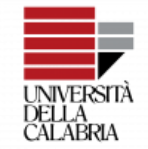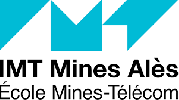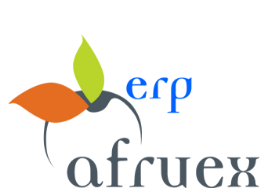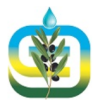
WORKPLAN
The work plan strives to maximise the efficiency of all activities carried out in the project and their impact. To this end, it is organised in a way that ensures a synergistic cohesion between related tasks but, at the same time, presents opportunities for concurrency. The project is divided into 9 work packages (WPs) :

+Start Month 1 – End Month 36
Objective
![]() Coordination and management of the project activities is the main goal of WP1 Specific objectives of this WP regard:
Coordination and management of the project activities is the main goal of WP1 Specific objectives of this WP regard:
![]() monitoring and controlling of the progress of all WPs and related activities ensuring, at the same time, quality management (monitoring and controlling will be done from a technical, financial and administrative point of view);
monitoring and controlling of the progress of all WPs and related activities ensuring, at the same time, quality management (monitoring and controlling will be done from a technical, financial and administrative point of view);
![]() assuring correct communications among project partners and toward the PRIMA call body;
assuring correct communications among project partners and toward the PRIMA call body;
![]() taking actions in case of delays;
taking actions in case of delays;
![]() knowledge management and IPRs;
knowledge management and IPRs;
![]() data management for the Open Research Data in Horizon 2020.
data management for the Open Research Data in Horizon 2020.
Deliverables
D1.1: Quality Assurance and Risk Management Plan, (Lead: UNIPR; Due: M3; R; CO)
D1.2: Data Management Plan, (Lead: UNICAL; Due: M6; R; PU)
D1.3: Ethics and Privacy Plan, (Lead: UEX; Due: M6; R; CO)
D1.4: Knowledge and Innovation Management Plan, (Lead: LSR; Due: M6; R; PU)
D1.5: Mid Terms progress report, (Lead: UNICAL; Due: M18; R; CO)
D1.6: Final progress report, (Lead: UNICAL; Due: M36; R; CO)
Start Month 1 – End Month 30
Objective
![]() This WP will pave the way for the specific research activities that will be done in the next WPs. Indeed, this WP will be completely devoted to depict the operational scenario for each of the SMALLDERS actors and to come up with formal requirements for the design of the SMALLDERS platform architecture. In summary, objectives of this WP are:
This WP will pave the way for the specific research activities that will be done in the next WPs. Indeed, this WP will be completely devoted to depict the operational scenario for each of the SMALLDERS actors and to come up with formal requirements for the design of the SMALLDERS platform architecture. In summary, objectives of this WP are:
![]() definition of the SMALLDERS operational scenario for smallholders, citizens, critical stakeholders, freight transport companies and policymakers and requirements definition for the User Management Layer;
definition of the SMALLDERS operational scenario for smallholders, citizens, critical stakeholders, freight transport companies and policymakers and requirements definition for the User Management Layer;
![]() definition of requirements for production and shipment monitoring and controlling, product traceability as part of the Certification Layer;
definition of requirements for production and shipment monitoring and controlling, product traceability as part of the Certification Layer;
![]() definition definition of requirements for new business models integration within the SMALLDERS framework;
definition definition of requirements for new business models integration within the SMALLDERS framework;
![]() multi-capitals sustainability requirements definition for the Dashboard Layer;
multi-capitals sustainability requirements definition for the Dashboard Layer;
![]() objectives of simulation models and definition of requirements for the Decision Level;
objectives of simulation models and definition of requirements for the Decision Level;
![]() Specifics of the SMALLDERS architecture and its Interoperability between different modules.
Specifics of the SMALLDERS architecture and its Interoperability between different modules.
Deliverables
D2.1: SMALLDERS Operational Scenario and Users’ Management Layer Requirements (Lead: UNICAL; Due: M8; R; CO)
D2.2: Certification Layer Requirements (Lead: UNIPR; Due: M8; R; CO)
D2.3: Business Model Integration Requirements (Lead: UEX; Due: M8; R; CO)
D2.4: Dashboard Layer Requirements (Lead: LAPER; Due: M8; R; CO)
D2.5: Decision Making Layer Requirements (Lead: LSR; Due: M8; R; CO)
D2.6: SMALLDERS Architecture (Lead: UNICAL; Due: M30; OTHER (Technical Diagram); CO)
Start Month 6 – End Month 30
Objective
The main goal of this WP is to carry out research activities devoted to understand how the SMALLDERS operational scenario can be framed within the SMALLDERS platform why considering, at the same time, the requirements defined in WP1 (that in turn include users’ expectation and dedicated performance measures), the different network resources that could be available in each country, the different ICT skills of all the SMALLDERS actors. Having clear network resources and users’ skills, the research activities will be devoted to:
![]() design and conceptualize (with the different use cases) the Users’ Management Layer front-end;
design and conceptualize (with the different use cases) the Users’ Management Layer front-end;
![]() design and conceptualize the logics behind the Users’ Management Layer back-end;
design and conceptualize the logics behind the Users’ Management Layer back-end;
![]() develop and implement the front-end of the SMALLDERS web-application and mobile application (as web-view);
develop and implement the front-end of the SMALLDERS web-application and mobile application (as web-view);
![]() develop and implement the back-end of SMALLDERS web-application and mobile application (as web-view).
develop and implement the back-end of SMALLDERS web-application and mobile application (as web-view).
Deliverables
D3.1 Report on Network resources and ICT skill gap analysis (Lead: UNICAL; Due: M18; R; PU)
D3.2 Report on the AI based Knowledge Navigator (Lead: UNICAL; Due: M18; R; CO)
D3.3 Software of the SMALLDERS Users’ Management Layer (Lead: UNICAL; Due: M30; OTHER(Software); CO)
Start Month 6 – End Month 30
Objectives
The objectives of WP4 are summarized as follows:
.To extend the knowledge on business models in the agri-food sector in order to include innovation and circular economy considerations.
.To identify new business models for the different roles in the SMALLDERS platform.
.To contribute to formalize the business models in resources and functionalities within the SMALLDERS platform
Deliverables
D4.1 State of the art on Agri-food Business Models: a systematic review of the literature (Lead: UEX; Due: M12; R; PU)
D4.2 Report on Citizens’ needs and policymakers decision process (Lead: UEX; Due: M18; R; PU)
D4.3 New Business Models for Smallholders (Lead: UEX; Due: M30; R; CO)
D4.4 New Business Models for Critical Stakeholders and Freight Transport Companies (Lead: UEX; Due: M30; R; CO)
Start Month 6 – End Month 30
Objectives
The objectives of WP5 are summarized as follows:
![]() To identify relevant sensors to be integrated in order to collect relevant information in SMALLDERS systems.
To identify relevant sensors to be integrated in order to collect relevant information in SMALLDERS systems.
![]() To develop an innovative IoT platform with efficient data management.
To develop an innovative IoT platform with efficient data management.
![]() To develop innovative blockchain-based mechanisms for traceability
To develop innovative blockchain-based mechanisms for traceability
Deliverables
D5.1 SMALLDERS heterogeneous sensing mechanisms (Lead: UNIPR; Due: M12; R; CO)
D5.2 SMALLDERS IoT system with heterogeneous communication mechanisms (Lead: UNIPR; Due: M30; OTHER(software); CO)
D5.3 SMALLDERS blockchain-based mechanisms (Lead: UNIPR; Due: M30; OTHER(software); CO)
Start Month 6 – End Month 30
Objectives
The main objective of this WP helps the development of a dynamic dashboard layer in order to intelligently assess and monitor the performance of the agri-food supply chain (SC) through different scenario definitions. To do this, a definition of innovative global and specific multi-capital sustainability indicators and indices is proposed in relation to the economic and social and environmental pillars of smallholder’s sustainable development. Indeed, the SC is continuously assessed through these multi-capital sustainability indicators via corrective actions made through the use of simulation models and the decision layer developed in WP7.
Deliverables
D6.1 Study of the sustainability context of the agri-food supply chain for smallholders (Lead: LAPER; Due: M12; R; PU)
D6.2 Identification of multi-capitals based mathematical models (Lead: LAPER; Due: M18; R; PU)
D6.3 Conceptualization of Agri-food SC scenario based on multi-capitals sustainability (Lead: LAPER; Due: M24; R; CO)
D6.4 Definition of multi-capitals sustainability indicators (Lead: LAPER; Due: M30; R; PU)
Start Month 9 – End Month 33
Objectives The objective is to propose a digital platform for decision support based on simulation models obtained from business models of WP4 and interactions from the real world obtained from WP5 and professionals’ experience of the agricultural area. The first step of this work package is to provide a digital mockup of the system. This mockup is used to help users to anticipate decisions according to objectives and KPI of the decision making layer defined in WP6. Then the platform is completed by physical interactions thanks to WP5 to create the digital twin. The final objective is to develop a platform which welcomes all industrial and academic partners as well as smallholders looking to acquire and develop capacities in digital transformations. In addition, this work package offers a customized and tailored training program to this technology for smallholders respecting their needs and their level of digital maturity. Deliverables D7.1 BPMN Models from Conceptual Business models (Lead: LSR; Due: M30; R; CO) D7.2 Simulation Model & Digital Twin Mock up (Lead: LSR; Due: M24; OTHER(software); CO) D7.3 Simulation Model & Digital Twin Final Release (Lead: LSR; Due: M30; OTHER(software); CO) D7.4 Training Program plan (Lead: LSR; Due: M33; R; CO)Start Month 12 – End Month 36
Objectives
The objective of this WP is to perform integration activities ofall the different software and methodological parts of SMALLDERS (User Management Level, Level Certification Level, Level Dashboard and Decision Level) and test the technological solution as identified in the description of the case studies located in the various countries involved in the project.
Deliverables
D8.1: Report on software integration and functionality.
- D8.1.1: Report on software at the User Management Level (Responsible: UNICAL; Due: M33; R; CO).
- D8.1.2: Report on software at the Certification Level (Responsible: UNIPR; Due: M33; R; CO).
- D8.1.3: Report on software at the Decision Level (Responsible: LSR; Due: M33; R; CO).
- D8.1.4: SMALLDERS platform (Responsible: UNICAL; Deadline: M33; DEM; CO).
D8.2: Case study analysis, user engagement, data and profile creation (Responsible: LSR; Deadline: M33; R; CO).
D8.3: Evaluation of the SMALLDERS platform and results of experiments (Responsible: UNIPR; Deadline: M36; R, PU).
Start Month 1 – End Month 36
Objectives
The WP9 objectives can be summarized as follows:
![]() To build external relations and wider links with researchers and companies in this field.
To build external relations and wider links with researchers and companies in this field.
![]() To disseminate knowledge, methodologies and results developed during the project.
To disseminate knowledge, methodologies and results developed during the project.
![]() To pave the way for a successful exploitation and long term sustainability of the project outcomes.
To pave the way for a successful exploitation and long term sustainability of the project outcomes.
Deliverables
D9.1 Report on new external relations (Lead: UNIPR; Due: M36; R; PU)
D9.2 SMALLDERS visual identity, Website and Social Media (Lead: LAPER; Due: M3 (first release) – M36 (final release); R; PU)
D9.3 Report on Dissemination activities (Lead: UEX; Due: M18 (first release) – M36 (final release); R; PU)
D9.4 Exploitation Plan and impact assessment (Lead: LSR; Due: M6 (first release) – M36 (final release); R; CO)










